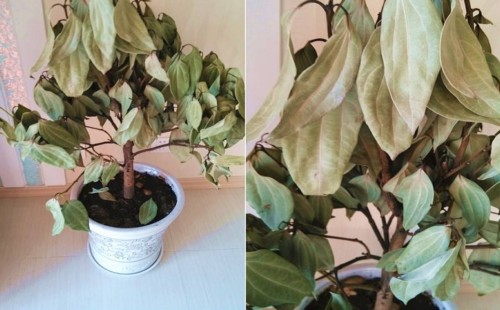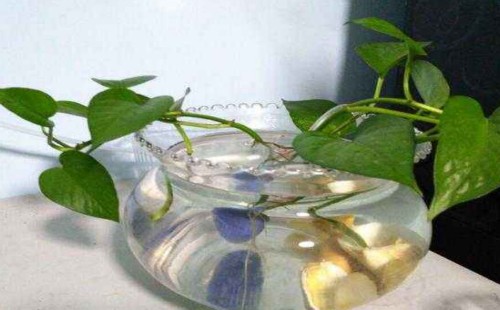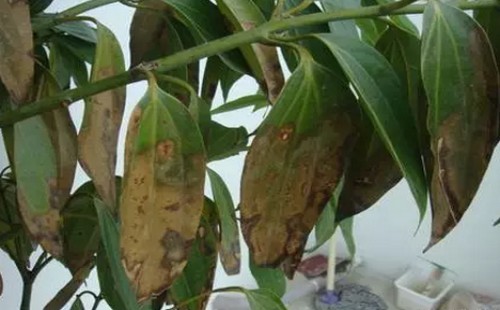How does the tree look like it's rotten?
Potted safe branches and leaves are evergreen, and the effect of greening and beautification is good, so it is very practical as a family potted plant. However, if there are rotting roots in the potted plant, the growth of the plant must be affected to varying degrees. Because the plant generally absorbs nutrients through the root system, once the root is rotten, the nutrition will not be smoothly transferred to the tree. Because the plant can not get enough nutrients, the plant will often show slow growth, or even stop growing. So, what do the Ping an trees think of rotten roots?

To judge whether the potted safe tree has rotten roots, we can identify it by observing, feeling and other audio-visual experience. Because Ping an tree likes the moist growth environment, but its roots are mostly fibrous roots, so its water absorption capacity is limited and is not water-resistant. Therefore, once the plant is overwatered and the root of the plant is flooded or soaked for a long time, it will often cause retting, stuffy root, rotten root and other phenomena, thus making the root lose the function of absorption.
In the process of actual maintenance and management, potted safe trees generally cause rotten roots due to excessive watering. After the emergence of rotten roots of Ping an tree, the performance of the plant is also very obvious, the most common is the withered yellow branches and leaves, wilting, drooping, shedding and other phenomena. Therefore, once the potted Ping an tree appears these poor growth phenomena for a long time, it is mostly caused by excessive watering caused by rotten roots. Of course, if we are not sure at this time, we can also judge it in other ways.
In addition to observing the growth state of branches and leaves of potted Ping an trees, we can also observe the dry humidity of potted soil to judge. We can gently plane the basin soil to a certain depth to observe whether the deep soil is too wet and whether there is stagnant water in the basin. If it is determined that the humidity in the basin is too high, we can often judge that the Langen phenomenon is caused by excessive watering. That's why the plant shows all kinds of poor growth.
Of course, we can also use a chopstick or a dry branch to insert it into the depth of the basin, and then take it out to see if it is soaked. If the chopsticks or dried branches are relatively dry, it means that there is no stagnant water or is too wet in the basin; if the chopsticks or dried branches are very wet, it means there is stagnant water in the basin. Therefore, it can also be judged that it is due to excessive watering caused by stagnant water in the basin caused by the rotting phenomenon.
Not only that, we can also use tools to gently tap the outside of the flowerpot, by listening to the feedback to determine whether there is stagnant water in the pot. If the echo is crisp, it means there is less moisture in the basin; if the echo is dull, it means there is too much water in the basin. In this case, it can also be explained to a certain extent that the stagnant water in the basin may lead to the phenomenon of rotten roots.
In contrast, the most direct approach is to dig open the soil of the flowerpot and observe whether stagnant water in the bottom of the pot has led to rotten roots. However, because the roots of Ping an tree are mostly fibrous roots, we should be careful when operating, because a little carelessness may damage a large number of roots, thus deepening the degree of damage to the roots of the plant.
Because the rotten roots of Ping an trees are mostly caused by excessive watering, the roots can not breathe, which is caused by bacteria, especially in the muggy and humid basin soil environment, the root rot phenomenon is often more likely to occur. Therefore, in order to judge whether the plant is rotten or not, we should not only observe the growth state of branches and leaves, but also observe the humidity in the basin, especially to see if there is stagnant water. In order to avoid the phenomenon of rotten roots, although we need to create a warm and humid potted soil environment for it, we also need to ensure proper watering and smooth ventilation in the process of maintenance and management of potted safe trees, otherwise it is inevitable for plants to have rotten roots. It is easy to judge whether the root of the safe tree is rotten or not by observing the growth state of the plant and the humidity in the basin.
Time: 2019-05-28 Click:
- Prev

Can hydroponic green pineapple bask in the sun
Green pineapple is a kind of evergreen plant with bright green leaves, which has indomitable vitality, is easy to feed, and also has a strong ability to purify the air, so it is very suitable to be placed indoors as a family potted plant. and it is a kind of foliage plant which is very suitable for indoor maintenance. Not only that.
- Next

What are the manifestations of the rotten roots of Ping an tree?
Ping an tree is evergreen all the year round and has high ornamental value, so many people like to plant it as a family potted plant, which can not only beautify the household environment, but also purify the indoor air, but also has a good meaning of auspiciousness and health, so it is very practical to put its potted plants in the family.
Related
- Fuxing push coffee new agricultural production and marketing class: lack of small-scale processing plants
- Jujube rice field leisure farm deep ploughing Yilan for five years to create a space for organic food and play
- Nongyu Farm-A trial of organic papaya for brave women with advanced technology
- Four points for attention in the prevention and control of diseases and insect pests of edible fungi
- How to add nutrient solution to Edible Fungi
- Is there any good way to control edible fungus mites?
- Open Inoculation Technology of Edible Fungi
- Is there any clever way to use fertilizer for edible fungus in winter?
- What agents are used to kill the pathogens of edible fungi in the mushroom shed?
- Rapid drying of Edible Fungi

